We will now deploy the Orchestrator appliance based on Linux.
We can deploy the Orchestrator appliance on either a vSphere environment or on VMware Workstation (or Fusion if you are a MAC user).
The Orchestrator appliance needs the following (defaults):
Two vCPUs at 2 GHz (less is OK, but it will be slower)
3 GB memory
12 GB disk space
One IP that is either a fixed IP or via DHCP
In this recipe, we will learn how to download and deploy Orchestrator.
Navigate to http://vmware.com and select Downloads.
Enter
Orchestrator appliancein the search text box and press Enter.Select the latest version from the menu.
Download the file that ends in
.ova.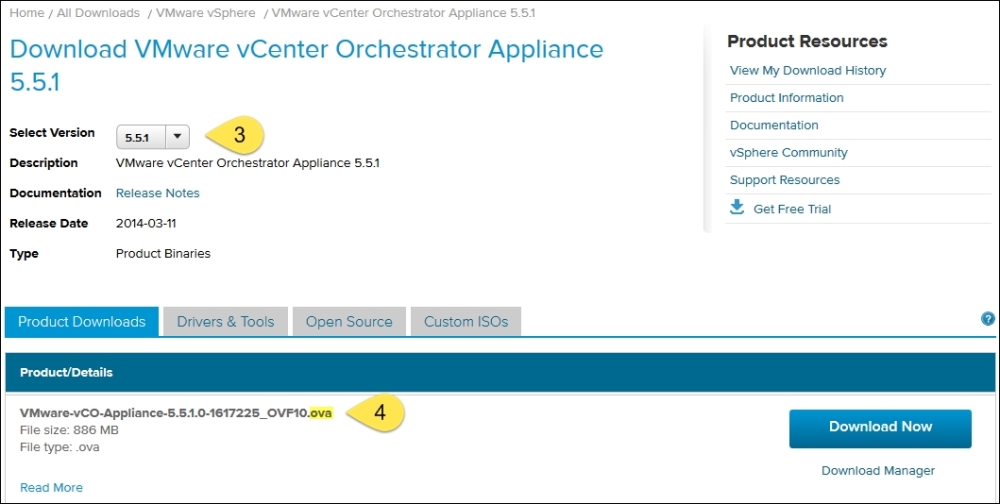
Right-click on the cluster or ESXi Server and select Deploy OVF Template....
The Deploy OVF Template wizard starts. Select the OVA file you have downloaded and click on Next.
Accept the EULA and click on Next.
Select a name (or accept the default) as well as the vCenter folder for the Orchestrator appliance and click on Next.
Select the cluster or ESXi Server or a resource pool for the Orchestrator appliance and click on Next.
Select the datastore you would like to deploy the Orchestrator appliance on and click on Next.
Select a network for the Orchestrator appliance and click on Next.
In the Customize template section, set a password for the root and the Orchestrator configuration account.
Set a hostname for the Orchestrator appliance.
If you want to use a fixed IP, expand the Network Properties section, enter all IP-related entries, and then click on Next. If you want to use DHCP, just click on Next.
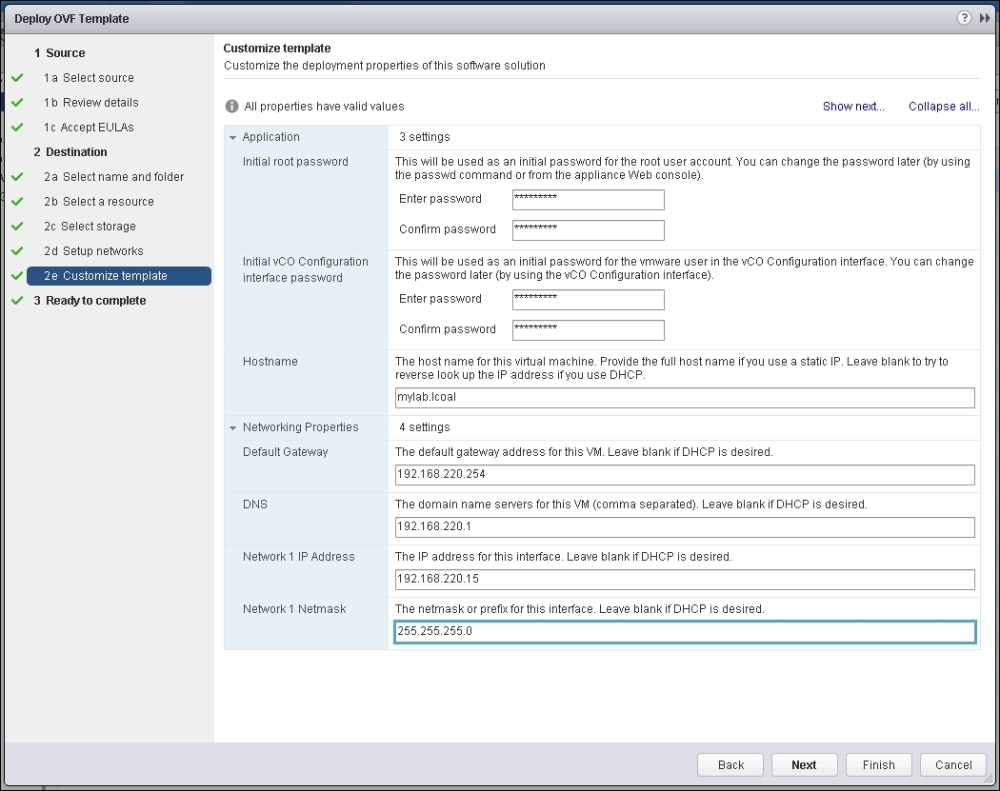
Opt to power on the VM after deployment and click on Finish.
Wait until the VM has finished deploying and is powered on.
Open the console of the Orchestrator appliance and wait until the install process has completed and the VM console shows the following screen:
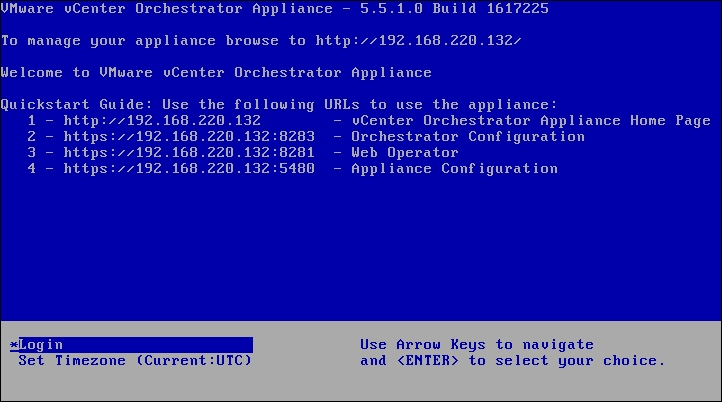
Open a browser and browse to the IP of the Orchestrator appliance (for example,
http://192.168.220.132).Depending on your environment, you might need to accept the SSL certificate. You are now on the Orchestrator home page with several useful links to all important Orchestrator topics.
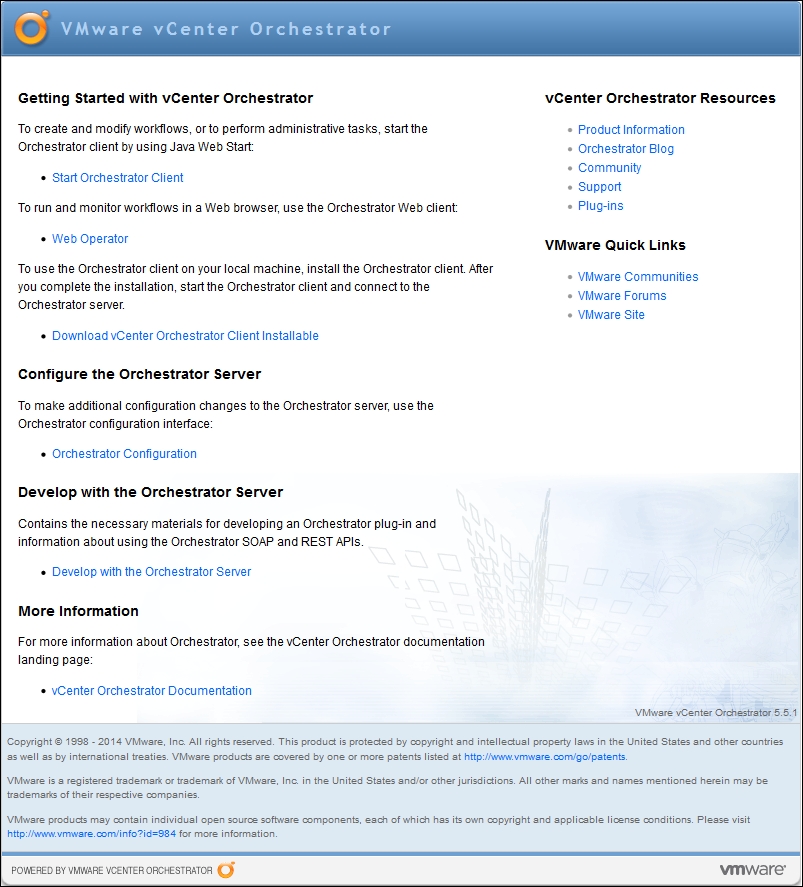
To open up the Orchestrator Client, click on Start Orchestrator Client.
Enter
vcoadminas user with the passwordvcoadmin.
vCO 5.5.2.1 appliance is a preconfigured Orchestrator installation that uses the following:
Suse Linux Enterprise Server (SLES) 11 Patch level 2
PostgreSQL 9.1.9
OpenLDAP 2.4.26
Everything is ready to run; however, no integration with vCenter or any external service is configured. The Orchestrator appliance comes with a 90-day evaluation license installed.
The LDAP has the following preconfigured entries:
|
Username |
Password |
Group membership |
|---|---|---|
|
|
|
|
|
|
|
|
Both LDAP and DB are protected to allow only local access to them.
If you want to deploy the Orchestrator appliance on VMware Workstation, the process of deploying the Orchestrator appliance differs from the one described in this recipe. Follow these steps instead:
Use Windows Explorer to navigate to the downloaded
.ovafile.Double-click on the OVA file. VMware Workstation opens up.
Select a name and a path for the new VM and click on Import.
Accept the EULA and wait until the VM is deployed.
You might need to select a different network (for example, Host-Only) depending on your lab environment.
Power on the VM and wait until the install pauses at the line indicated in this screenshot:
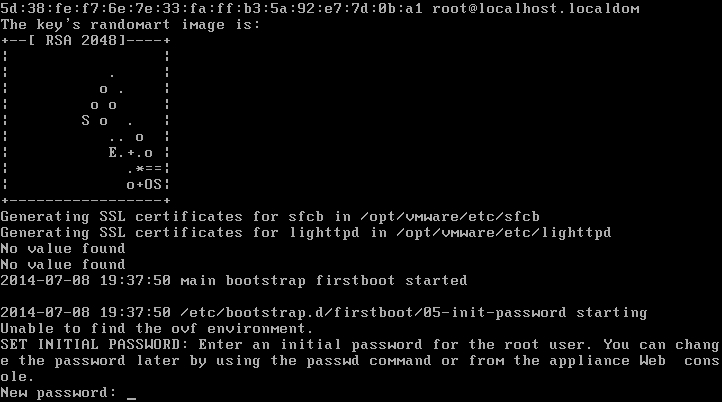
Then, enter and confirm a new password for the Orchestrator Configuration tool. The installation will now continue. Wait until it has finished.
The appliance will start with a DHCP address from Workstation. To set a static IP, you will have to access the admin interface of the appliance.
See the Tuning the appliance recipe in Chapter 2, Optimizing Orchestrator Configuration.



